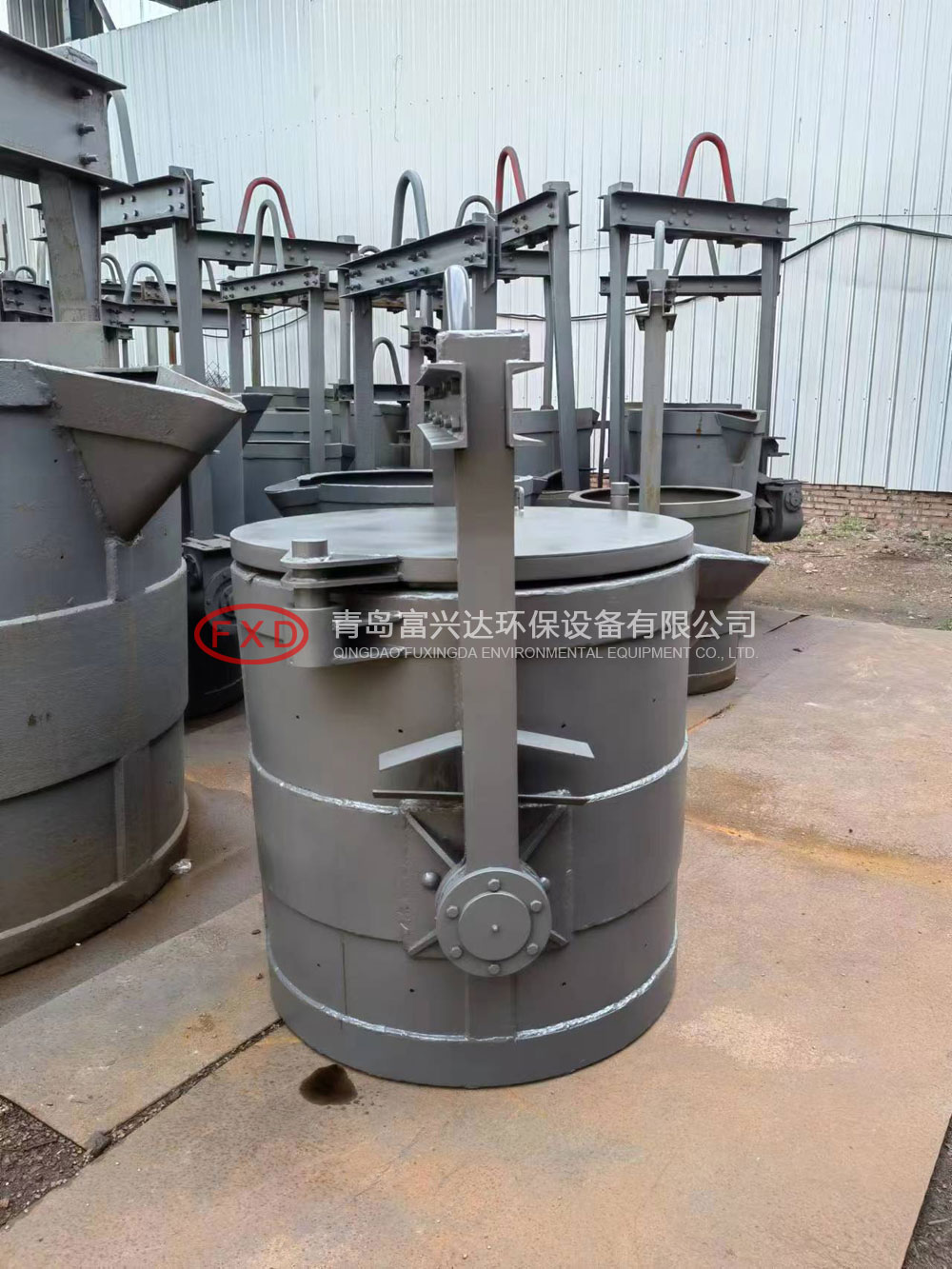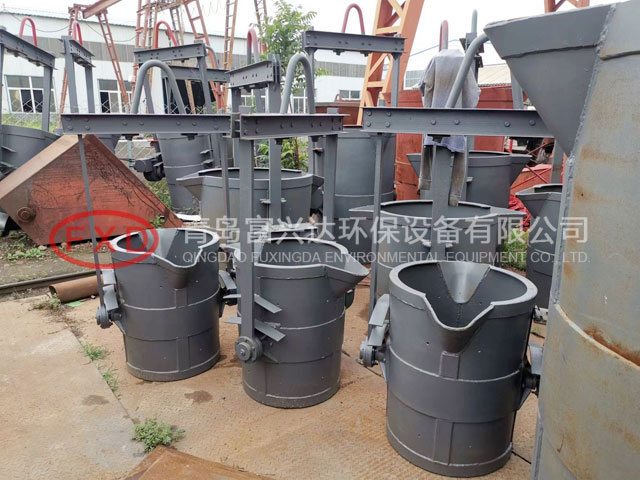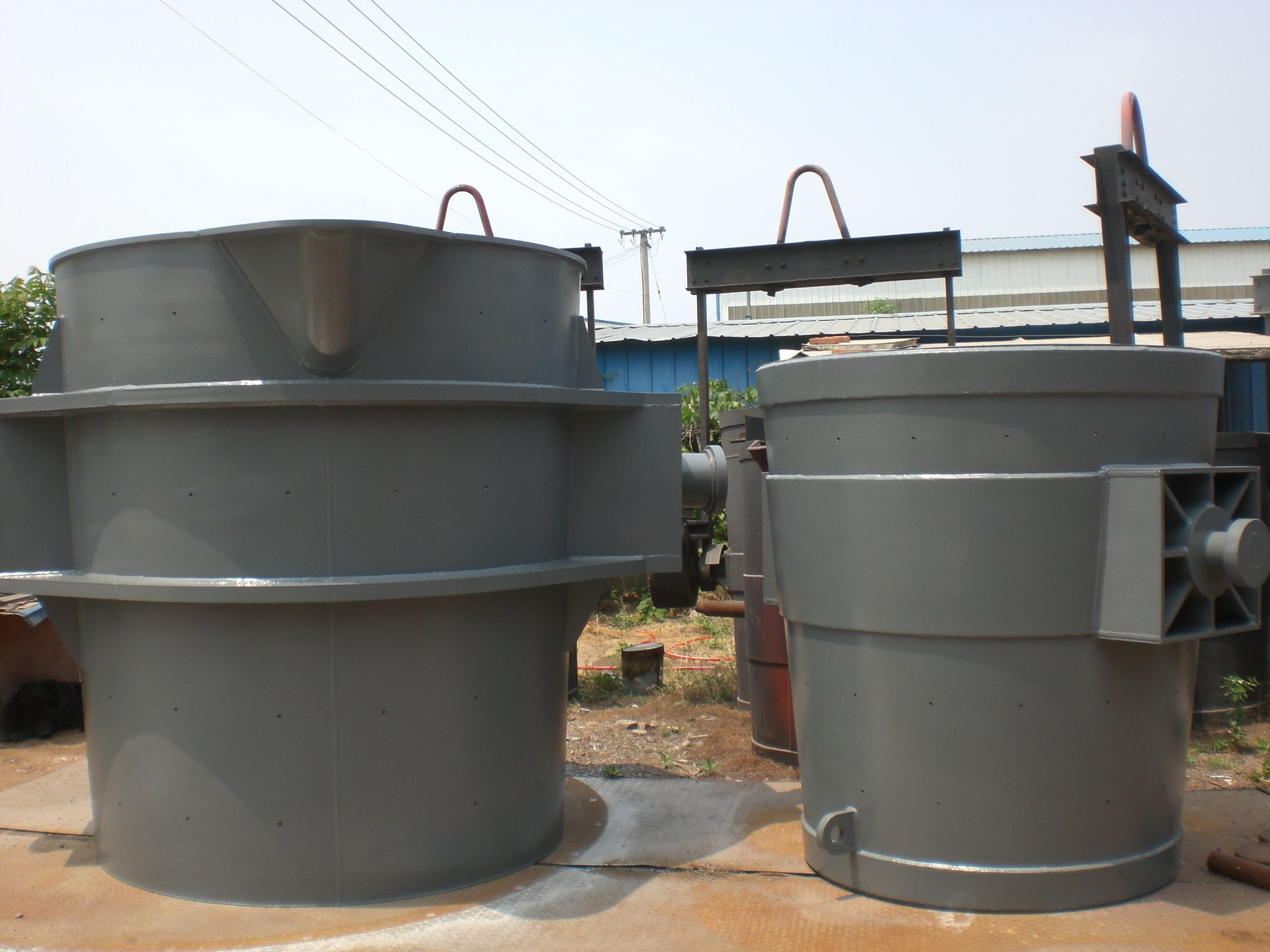
The molten iron tank is the equipment for holding and transporting molten iron. There are two types of open hot metal tank and torpedo hot metal tank. The open type molten iron tank is also called the ladle, and the torpedo type molten iron tank is also called the mixer. When the molten iron is packed and transported, the ladle lining is subject to high temperature, thermal shock, mechanical wear and chemical erosion of slag and iron; When molten iron is poured out, the impact surface of molten iron is eroded even more
At the same time, the molten iron ladle works under alternating conditions of high and low temperature. The longer the interval, the more serious the lining damage. Therefore, refractory materials with corrosion resistance, high strength and thermal shock resistance should be selected for the lining of the ladle
When desulphurization treatment is carried out in the molten iron ladle, the molten iron moves violently, which aggravates the erosion of the lining. When sodium carbonate (Na, CO:) is used as desulfurizer, it will directly melt the lining and accelerate the damage at the slag line; When calcium carbide (CaC,) is used as desulfurizer, the slag will become sticky, easy to hang on the lining wall and difficult to clean. If the content of manganese and phosphorus in molten iron is high, the content of silicon is low, and the temperature of molten iron is high, the lining damage is also relatively large. The desulfurizer is lime, fluorite or calcium carbide; The desilication treatment agent is iron scale and lime; FeO-CaO-CaF, or soda Na, COg are used for desulfurization treatment

molten iron ladle
In the process of dephosphorization, desilication and desulfurization, the basicity of slag changes greatly, from 0.5 to more than 3.0, the corrosion of fire-resistant materials is serious, and the erosion of agitated molten iron, as well as the temperature fluctuation caused by intermittent operation, is found in the lining of molten iron ladle, Especially, the damage of refractory materials at slag line is intensified
Therefore, according to the working environment of the ladle, the requirements for the refractory used are high compressive strength, good slag resistance (both acid and alkaline slag resistance), good thermal shock resistance, good peeling resistance, and compact structure. Generally, clay bricks, high-alumina bricks, impregnated bricks, magnesia-carbon bricks, silica-alumina bricks, and some refractory castables and sprayed coatings are used
The molten iron ladle without desulfurization, desilication and dephosphorization treatment is built with clay bricks in China, and Al, O: - SiC-C unburned bricks are gradually used at the slag line

The molten iron ladle without desulfurization is generally fired clay bricks or red pillared bricks abroad, most of which are soaked in oil. The general part of the lining is built with clay bricks or ordinary high-alumina bricks, and the parts easily damaged by iron mouth and slag line are built with high-alumina bricks. When transporting high-manganese molten iron, high-alumina bricks with high corundum content shall be used. In order to make the lining wear evenly, the comprehensive furnace is adopted, the unburned red pillared brick is used in the places with serious wear, the carbon-bonded corundum brick is used in the slag line with particularly serious erosion, and the fired aluminosilicate refractory brick is used in the places where oxidation damage is easy to occur As mentioned before, the slag alkalinity changes greatly and the working conditions are harsh when the three-way treatment is carried out in the molten iron ladle. The clay bricks and high-alumina bricks originally used for masonry can no longer meet the use requirements. At present, unburned asphalt bonded brick or synthetic resin bonded brick is dominant in the desulfurized hot metal ladle. The material is Al, O, - SiO, - C and AL, O, - SiC-C, and the material for dephosphorization of hot metal is zircon - SiC-C brick. In the case of hot metal pretreatment and separate dephosphorization mainly using CaO series flux, some foreign factories also use MgO-C bricks and Al, O, - MgO castables for desilication< P>The spray gun refractory used for hot metal pretreatment abroad generally uses AL, O: - SiO, which is castable, Al, O; 70-80%, adding SiC, C or Cr, O into the spray gun material can effectively improve the slag wettability, and adding steel fiber is beneficial to improve the spalling resistance. Use AL, O in the molten iron ladle- After SiC-C brick, the same material of fire clay shall be selected
Alkaline slag with strong corrosivity will be formed during the pretreatment of molten iron, and the clay bricks and high-alumina bricks originally used can no longer cope with the use. AL/O: - SiC-C brick has high peeling resistance and corrosion resistance, so its service life is greatly improved. In order to further improve the performance of the brick, metal powder, borate glass and zirconia powder can be added to it. The resin combines with Al, O, - SiC-C bricks. The ALOg component in the product can resist the erosion of various treatment agent residues, while the thermal conductivity of C is good, which can improve the thermal shock stability of the product, effectively prevent the penetration of iron slag into the product, and improve the peeling resistance and corrosion resistance of the product
SiC can significantly improve the oxidation resistance of the product, play a role in preventing graphite oxidation, and improve the high-temperature performance of the product by adding composite additives, thus greatly improving the hot metal erosion resistance and wear resistance
At present, the materials used to build molten iron ladle in China include ordinary clay brick, ordinary three-level high-alumina brick, dense clay brick, pyrophyllite brick and aluminum-silicon carbide castable. The castable used by the 300t hot metal ladle of Japan Broadcasting Corporation is pyrophyllite-corundum-silica carbide, and the ladle age is more than 600 times; The castable used for the 200t hot metal ladle of Japan Daguang Furnace Materials is aluminum-carbon, and the ladle age is 600-700 times. The 150t hot metal ladle made of Kawasaki furnace materials in Japan is made of high aluminium-silicon carbide, and the ladle age is more than 600 times


 111
111 